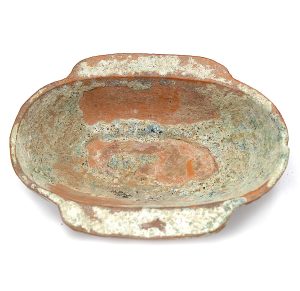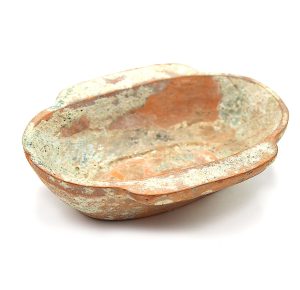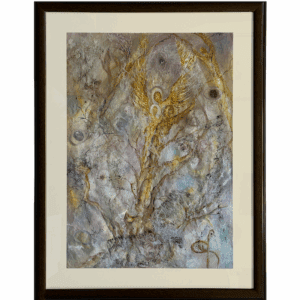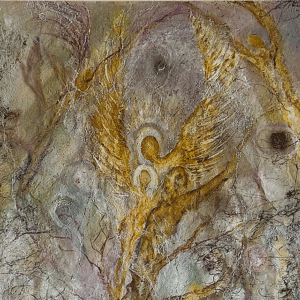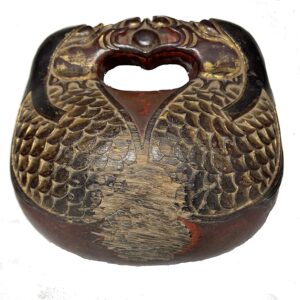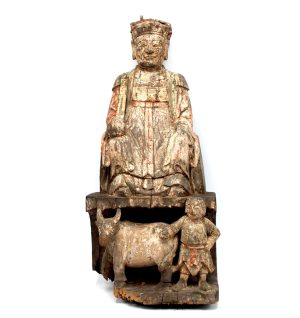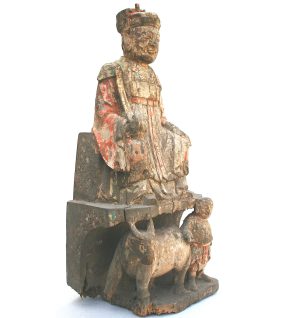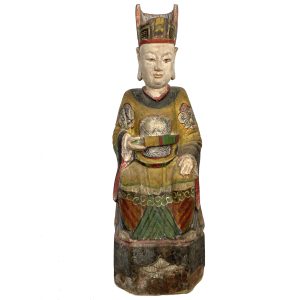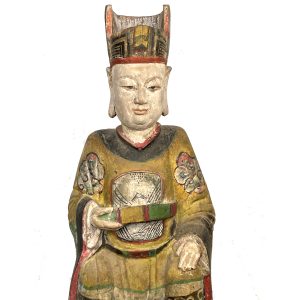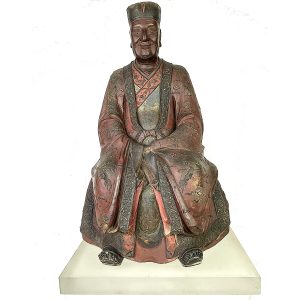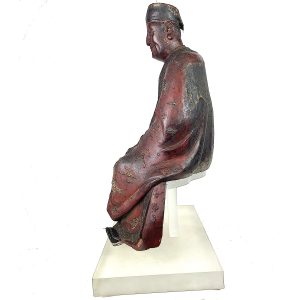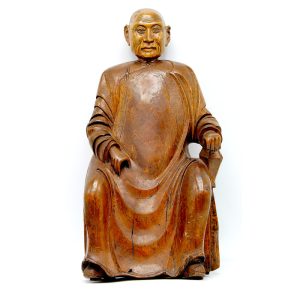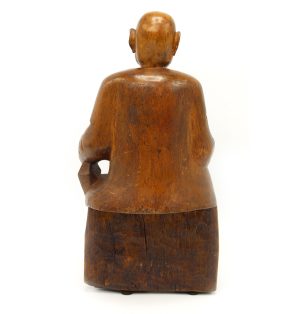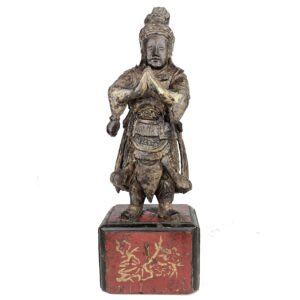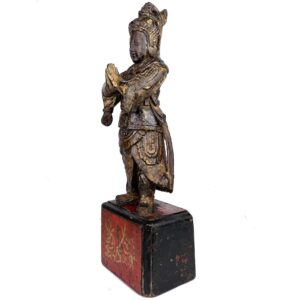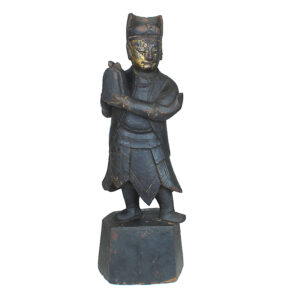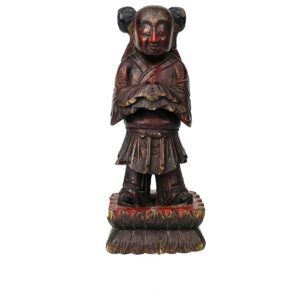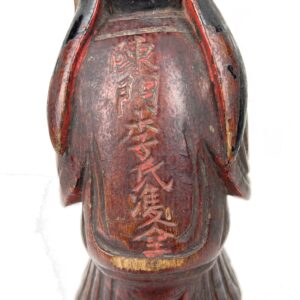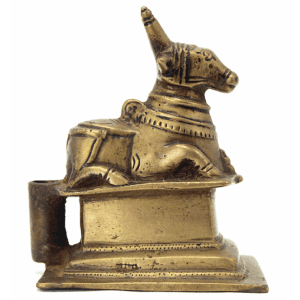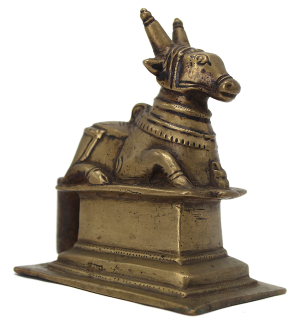Showing 1–12 of 248 results
-
Sale!


$450.00 Original price was: $450.00.$310.00Current price is: $310.00.
H: 1.5″ W: 5.125 ” D: 3.875 ” | FREE SHIPPING WITHIN CONTINENTAL U.S.!
Used for rituals and ceremonies, lead green glazed earthenware wing cups were popular burial objects. The tomb’s humidity caused the lead to oxidize to a lustrous, prized iridescent, silver-green.
-
Sale!


$395.00 Original price was: $395.00.$315.00Current price is: $315.00.
H: 2.5″ W: 4.5″ D: 2.375″ | FREE SHIPPING WITHIN CONTINENTAL U.S.!
This diminutive mingqi pig is totally charming and fanciful with an iridescent glaze and would be especially appealing as a send off for the deceased to the nether world or in a contemporary setting. Pigs were especially prized and images were often included as items the deceased would need to live comfortably in the after life.
-


$1,700.00
Ht: 35.5″ W: 24″ | CALL 213-568-3030 OR EMAIL [email protected] FOR SHIPPING
In Angels of Love, three angels rise organically above what can be interpreted as the Tree of Life. Symbolically for the artist, love nourishes both the internal and external roots of the universal Tree of Life in all of us.
-
Sale!


$875.00 Original price was: $875.00.$725.00Current price is: $725.00.
H: 12″ W: 11.75″ D: 9.5″ | CALL 213-568-3030 OR EMAIL [email protected] FOR SHIPPING.
Intricately carved Cadence or “Wakeful” Drum used by monks and chanters to awaken the mind and keep meditators attentive and mindful. Used In Pure Land Buddhism for chanting Amitabha Buddha’s name. Fish on handle symbolize wakeful mind as fish never close their eyes.
-
Sale!


$885.00 Original price was: $885.00.$650.00Current price is: $650.00.
H: 14.25″ W: 7.125″ D: 4.8″ | FREE SHIPPING WITHIN CONTINENTAL U.S.
Extremely rare provincial carving with a Taoist official on top above the legendary “Spring Ox,” accompanied by the Taoist Earth God “Herd Boy” who each spring ritually “wakes up the earth” by symbolically beating the Spring Ox with sticks.
-
Sale!


$2,385.00 Original price was: $2,385.00.$1,900.00Current price is: $1,900.00.
H: 34″ W: 11.25″ D: 7.25″ | CALL 213-568-3030 OR EMAIL [email protected] FOR SHIPPING
Although this ancestor is depicted as an official, his atypically benevolent face makes him a very endearing figure. Due to South China’s climate and modernization, it repainted in the 20th century, common in weathered carvings.
-
Sale!


$4,950.00 Original price was: $4,950.00.$4,200.00Current price is: $4,200.00.
H: 23.5″ W: 15.625″ D: 10″
CALL 213-568-3030 OR EMAIL [email protected] for shipping.
This exceptional official is one of the most significant ancestor figures in our collection. His attire, glass eyes and distinct facial features indicate a wise man of importance who commands respect. Cranes and clouds symbolize longevity, wisdom, good fortune and emphasize his high rank.
-
Sale!


$785.00 Original price was: $785.00.$575.00Current price is: $575.00.
H: 10.25” W: 5.125” D: 4” | FREE SHIPPING WITHIN continental us
This very finely carved figure of an ancestor was commissioned by a family of either high status or wealth, having been fashioned from a single piece of an exquisite and rare hardwood with a lustrous patina.
-
Sale!


$695.00 Original price was: $695.00.$395.00Current price is: $395.00.
H: 16.25: W: 5.875” D: 3.5” | FOR SHIPPING INFORMATION CONTACT US AT 213-568-3030
Attendant Chou Ts’ang, to Guandi, most revered Chinese military hero and Taoist God of War, hands clasped and eyes down in respect wearing detailed military clothing and boots on high pedestal with painted gold florals.
-
Sale!


$435.00 Original price was: $435.00.$365.00Current price is: $365.00.
H: 15.5″. W: 5.5″. D: 4.24″ | FREE SHIPPING WITHIN CONTINENTAL U.S.
Taoist attendant holding an offerings tied with ribbons that symbolized longevity for generations. Some gilt and lacquer has naturally darkened from years age and incense.
-
Sale!


$485.00 Original price was: $485.00.$385.00Current price is: $385.00.
H: 7.5″ W: 3″ D: 2.75″ | FREE SHIPPING WITHIN CONTINENTAL U.S.
Sensitive modeling of the face, body and lotus base, its appealing features and graceful garments, make this diminutive statue truly endearing. The rear inscription indicates it was commissioned to celebrate the wedding of a daughter and, as such would make a superb wedding gift.
-
Sale!


$245.00 Original price was: $245.00.$165.00Current price is: $165.00.
H: 4.5″ W: 2.25″ D: 3.25″ | FREE SHIPPING WITHIN CONTINENTAL U.S.
Antique recumbent long horned Nandi seated on a high pedestal throne, with jeweled decorations on head and body is an incense holder . Beautiful patina, finely cast.
End of content
End of content

